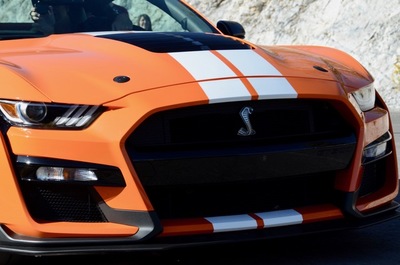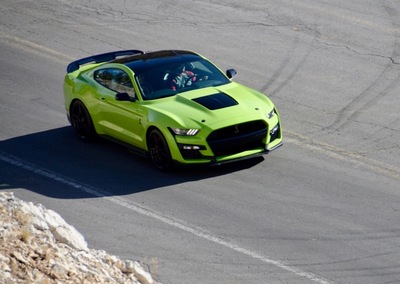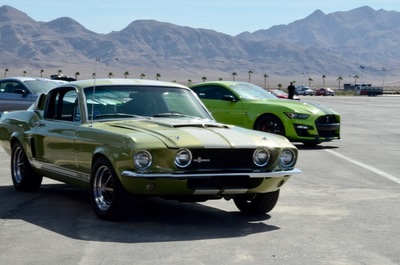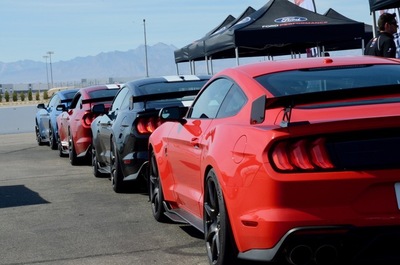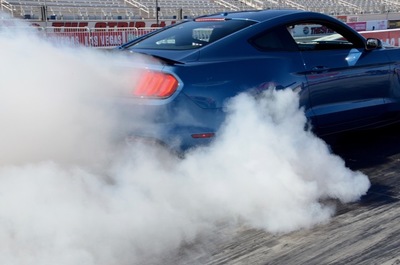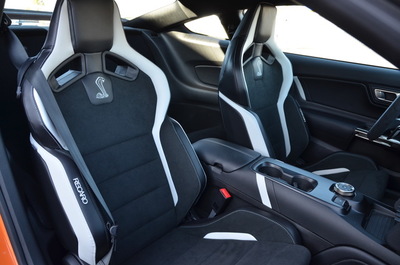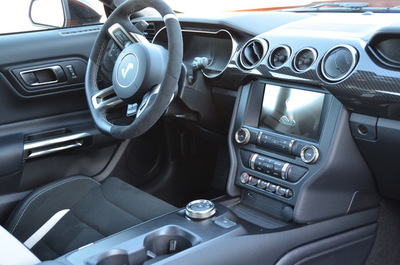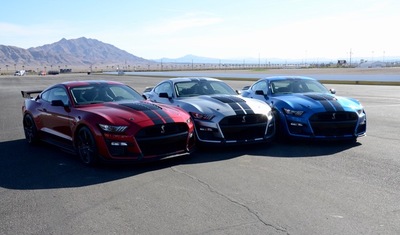2020 Ford Mustang Shelby GT500, Street, Track and Drag Strip Review by Larry Nutson +VIDEO
2020 Ford Mustang Shelby GT500 - Driven
Street, Track and Drag Strip
Street, Track and Drag Strip
By Larry Nutson
Executive Editor and Bureau Chief
Chicago Bureau
The Auto Channel
I recently spent a day, along with a cadre of other automotive journalists, with the Ford Performance team as well as Ford’s engineering experts who were behind the development of the new 2020 Shelby GT500.
At the end of the day one thing was for sure: the American pony car horsepower war goes on!
We were at Las Vegas Motor Speedway (LVMS), a location well chosen by Ford since it has both a road course as well as a drag strip. And, we could easily get out of Vegas to let the GT500 stretch its legs on the open highway and twist and turn through some mountain roads.
The big data is the new Shelby GT500 is driven by a 5.2-L 760-horsepower supercharged V8. It’s the most powerful street-legal Ford ever. The engine develops 625 ft.-lbs. of torque. This horsepower, together with huge Brembo brakes, will take the GT500 from 0 to 100 to 0 mph in 10.6 seconds.
This shatters Carrol Shelby’s old record of 13.8 seconds.
Zero to 60 mph is in 3.3 seconds. Ford’s official quarter mile ET is 10.7 seconds with trap speed at the big end in the realm of the low 130’s.
With the previous generation Mustang, the Shelby GT500 was pretty much a straight-line car, limited by its live rear axle. Following its sibling GT350 and building on Carroll Shelby’s original idea of transforming a great every-day car into a dominant road racer, Ford has taken advantage of the dramatically improved sixth-generation Mustang to create the most visceral Mustang yet.
The V8 is all-aluminum, uses a traditional cross-plane crank with 90-degree throws, and is topped by an Eaton 2.65-liter roots type supercharger pumping out 12 psi of maximum boost. There’s an air-to-liquid intercooler tucked into the V8’s engine valley. The GT500’s engine is the most power dense V8 on the market..that’s the ratio of horsepower to displacement (HP/Liter). Redline is 7500 RPM.
Ford wanted the GT500 to deliver absolutely the best performance possible. Their choice, a Tremec 7-speed dual-clutch transmission (DCT) putting the power to the rear wheels. Purists may argue for a manual transmission. But note, the Tremec DCT is cable of shifts in 80 milliseconds in sport mode. To put it in perspective, a skilled driver would still be pushing down the clutch pedal with a manual transmission while the DCT would have the shift already completed. Normal, weather, sport, track and drag modes can be selected.
With all this get-up-and-go performance, stopping is also critical. Brembo-bred huge 16.53 inch two-piece rotors are used up front with six-piston calipers. These brakes have 20-percent more swept area than those on the Shelby GT350. Here’s an interesting tid-bit. These brake rotors are larger than the 15-inch wheels on the first 1967 GT500.
Handling the twists and turns is new electronic power steering, new suspension geometry, and next-gen active MagneRide suspension. Michelin Pilot Sport 4S or more aggressive Michelin Pilot Sport Cup 2 connect the GT500 to the pavement. Wheels are 20X11 inch front and rear, with optional carbon fiber wheels in the Track Package that are 11.5 inch in the rear.
Along with numerous unique exterior design elements (check out the photos) aero was an important consideration. The Shelby GT500 had 550 pounds of rear downforce at 180 mph while also extracting 230 kilowatts of thermal energy to keep everything “cool.”
So we drove this “snake” around a 2.4-mile LVMS road course. Following a couple ride-along orientation laps in a Ford Transit we donned a racing helmet plus a modified HANS device and were secured in a GT500 with a six-point harness that was mounted to an internal roll bar hoop.
There’s a 1200 ft. straight and a 1600 ft. straight on this 12-turn course, so we could be reaching speeds in the range of 130 to 140 mph. On my first lap out I was surprised that just after a few turns at how comfortable I was behind the wheel and how well mannered the GT500 is when pushed hard. So I went for it, followed by two more even faster laps.
This “snake” was loads of fun and very well mannered when pushed. Steering is direct. The car is stable at high speed. Braking is well balanced with no fade. Cornering is flat and it rotates nicely through a turn. Clip the rumble strips at apexes and there’s no upset. Exiting a turn you can lay into the power with no loss of grip. The confidence level is high.
Next, off to the drag strip. I wanted to get close to Ford’s 10.7 second quarter mile time. But I knew conditions were not ideal. We were at 2200 ft. elevation and facing a 25+ mph headwind blowing right down the strip. I made four runs using Ford’s line lock to heat the Michelin Pilot Sport 4S tires. Launch control set initially at 1400 rpm and then upped to 1600 rpm would get me hooked up and launched. The power train controller allows the engine to rev to over-torque. My best run was 11.34 seconds at 126.82 mph. Amazing for a “production car” that’s basically right off the production line. For comparison, the best run I know of on that day was a 10.9.
Oh yeah, by the way, we drove the GT500 on the road. From LVMS we drove up 8,000 feet to near the top of Mt Charleston. The GT500 is very friendly. Quite. Comfortable. Civilized. Not jittery or bouncy on paved roads. Really tempting to go fast. Nicely equipped with a 12-speaker B&O audio and a nav system. The DCT is smooth and effortless plus the shift paddles make for a bit more driver engagement. The active exhaust can be manually switched on for a bit more visceral feeling, or there’s a quiet mode to keep from waking up your neighbors.
The cost to go racing in the new GT500 is $70,300. The optional carbon fiber track package will run you $18,500 and that gets those carbon fiber wheels mounted with Michelin Pilot Sport Cup 2 tires, and an adjustable exposed carbon fiber track wing and splitter wickers with integrated dive plane, plus there’s no rear seat.
This third-generation Shelby GT500 is far better than the first that Carroll Shelby did in 1967. It’s a street-legal race car that delivers loads of supercharged fun. I’m ready for more time on the track and drag strip. Check it out at www.ford.com.
Smoke and screaming horsepower—could there be anything more American?
This report comes from an invitation-only Ford launch event that allowed special access to the vehicle and executives. Ford provided my overnight accommodations, meals, and transportation.
© 2019 Larry Nutson, the Chicago Car Guy



